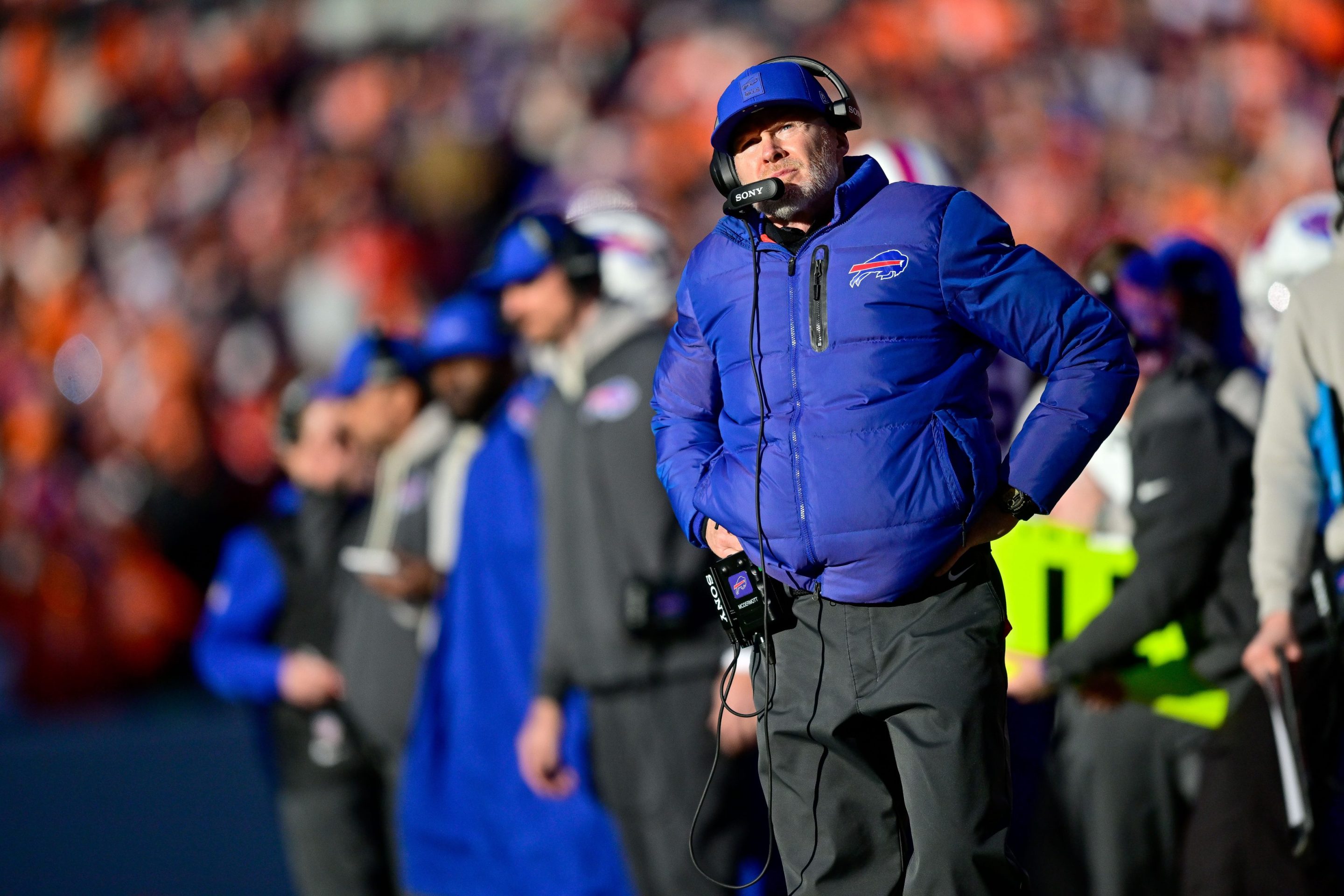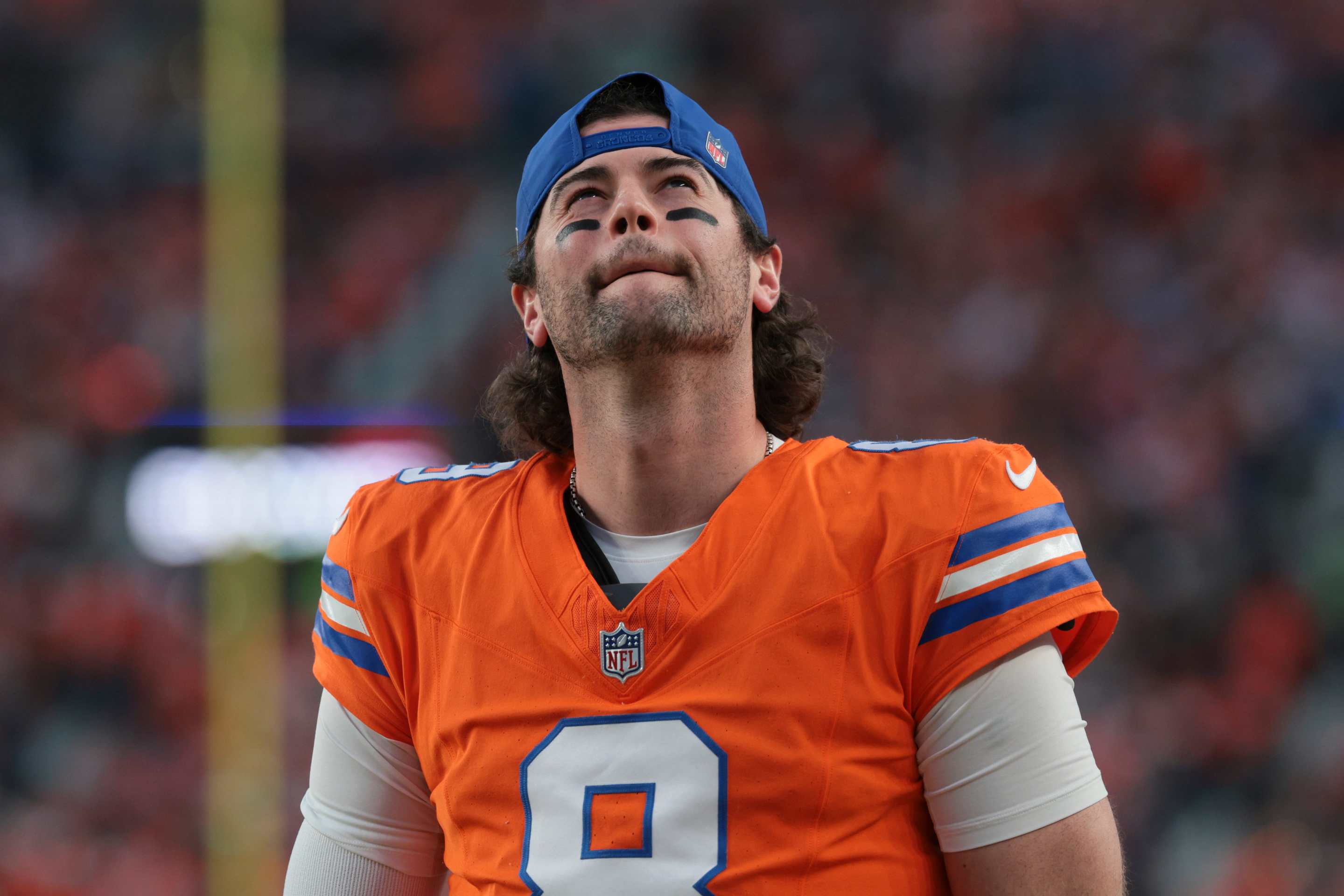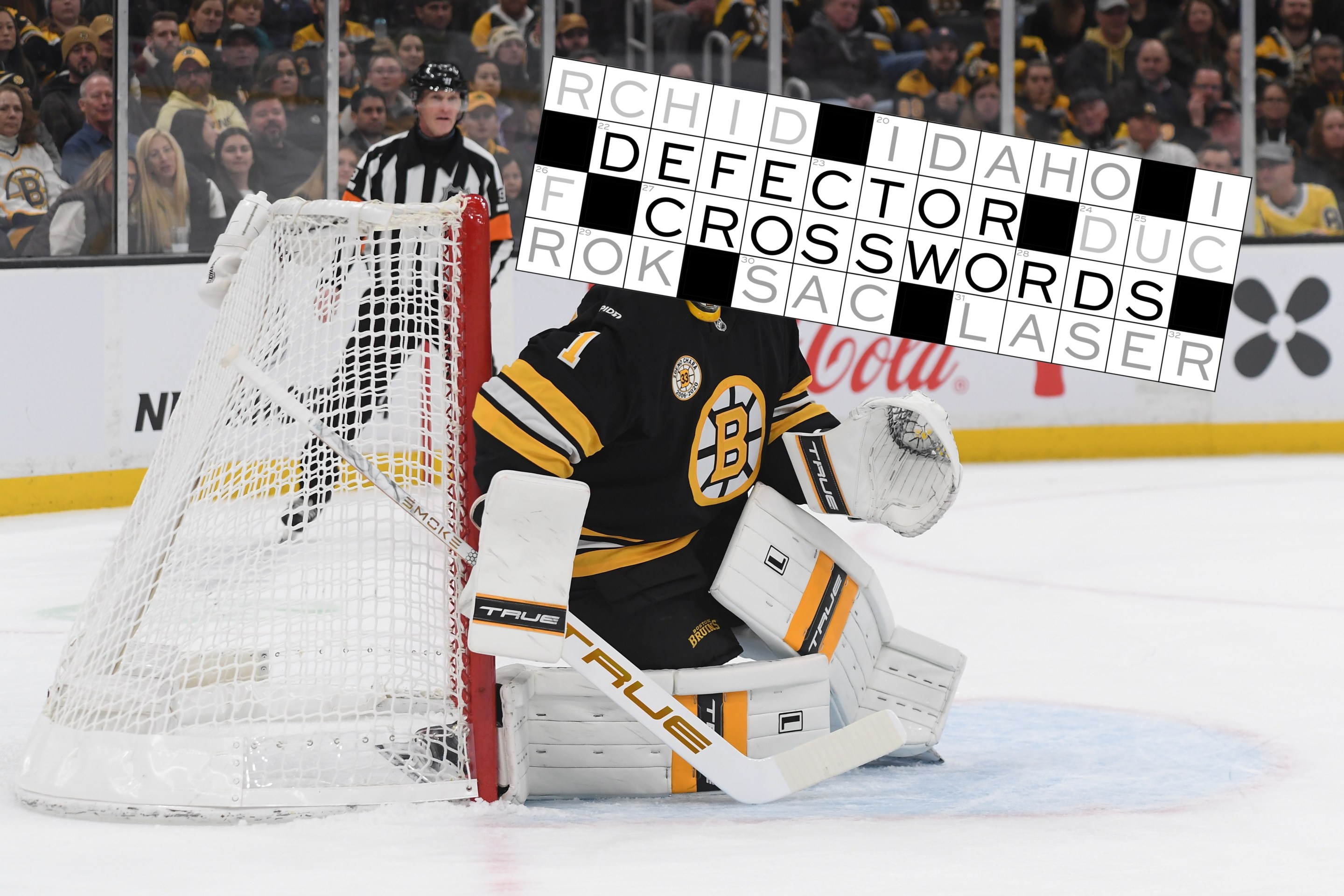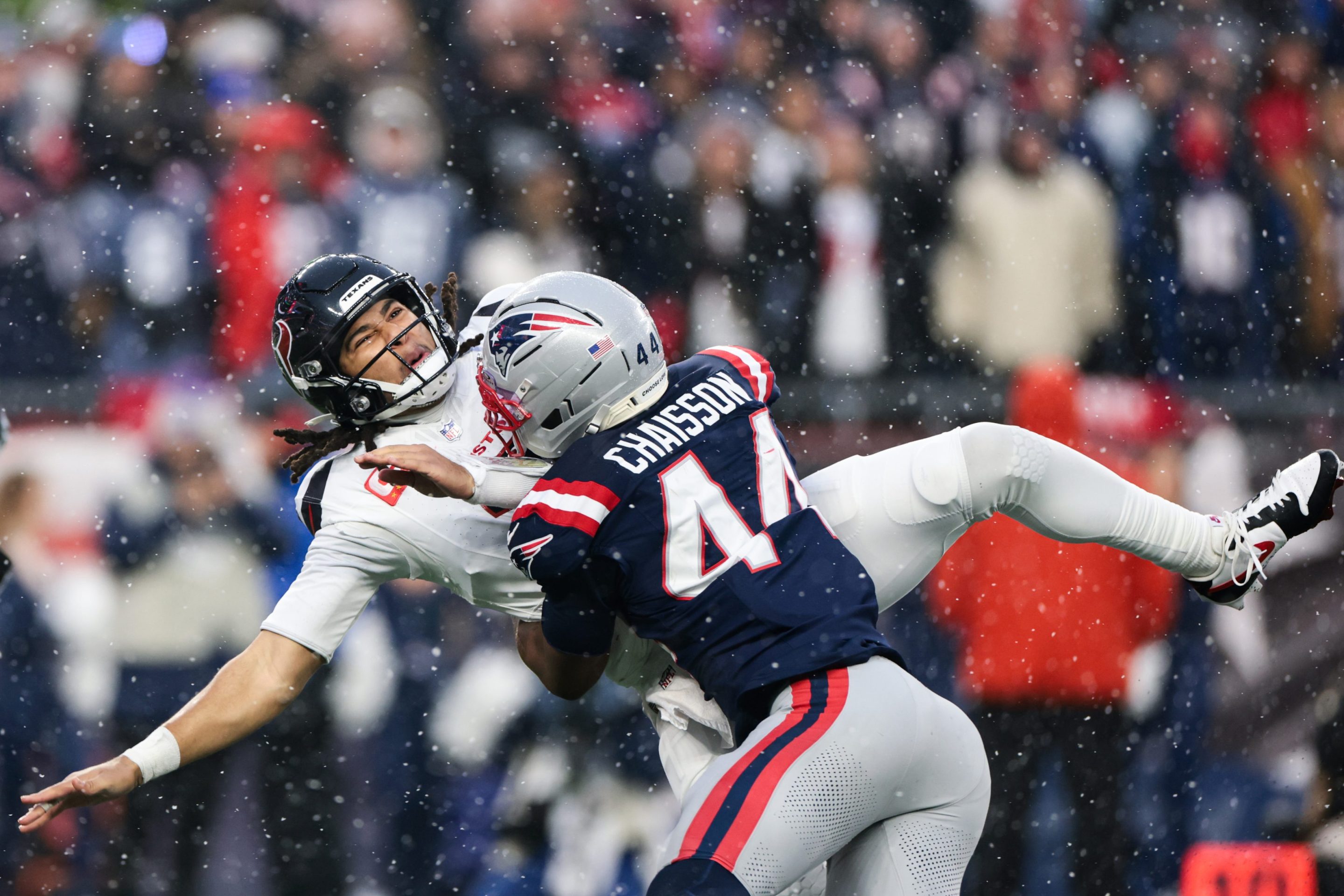There’s this flyer that reminds Liz Knox where she’s been. It’s a decade old, and she came across it this past November when someone shared it with her on Facebook. Knox appears on the flyer, in two grainy photos, but it might save time to list everything that isn’t on the flyer, such is its approach to graphic design. The words “HOME OPENER,” set in narrow type and given 3-D WordArt treatment, add a pop of shiny silver to the black and scarlet page. It announces that at 2 p.m. on a Sunday in November, the Brampton Thunder will host the Calgary Inferno of the Canadian Women’s Hockey League, helpfully illustrated by the team and league logo JPEGs, white background and all, pasted up top. Squeezed between action shots rotated at slight, quirky angles is an address for Century Gardens Arena, a suburban rec center. Stick around for “Autographs and Photos Following the game!” If you were a fan with more questions—if this somehow left anything to the imagination—you could contact Brampton’s general manager, the Olympic gold medalist Lori Dupuis. Her email address is printed in the bottom-left corner.
Knox is 35, with an easy laugh and a voice that is weary but earnest. She works full-time as a firefighter in Oakville, Ontario, a suburb between Toronto and Hamilton, along the lake. When she started as a volunteer firefighter, she came to love certain aspects of the job, like the team culture and the emphasis on problem-solving. A firehall, Knox thinks, is the work environment most similar to a locker room. “We’re kind of teasing each other, but also you go through some really hard things together,” she said.
When Knox played goalie for the Brampton Thunder, later the Markham Thunder, she worked construction. Her days began at 5 a.m., and she’d get home from practice around 11:30 p.m. She shared locker rooms with the best athletes of her generation, though you wouldn't know it from the facilities or the flyers. “They're coming home from this world stage where they're heroes, and they're torchbearers, and they're flag bearers,” she said. “And they come home to this.”
The CWHL didn’t pay players until its 11th season in 2017, when it began offering stipends between $2,000 and $10,000. But the money came with strings: That same year, the league added two teams in China. “It just didn’t quite sit right with me that the players were never consulted,” Knox said. Most worked full-time jobs outside of hockey, and now they were expected to find vacation time and sick days to travel to games on the other side of the world.
It was the moment she understood what was missing from women's hockey: “a player’s voice and something to legitimize it.” She got involved with the CWHL players association, but knew the limits of its power: The PA wasn’t legally a union. At times, she and her teammates joked that the only way to send the league a message would be for everyone to stop playing.
Knox and I spoke before the launch of the Professional Women’s Hockey League, which began play in January with teams in Boston, Minnesota, Montreal, New York, Ottawa, and Toronto. Reported attendance for Minnesota's home opener was over 13,300; the league announced that its inaugural game between New York and Toronto reached 2.9 million Canadian viewers; and all 12 home games in Toronto this season, at the old Maple Leaf Gardens, are sold out. The PWHL is far from the first attempt at professional women’s hockey, but the sport has never been funded like this, by the billionaire Mark Walter, controlling owner of the Los Angeles Dodgers. This past July, the players ratified the first collective bargaining agreement in women’s hockey. They say that proper infrastructure, in the form of paid full-time staff, year-round health insurance, and professional-grade facilities, will finally allow them to focus on their game. The league has its origins in the most impressive labor action in North American sports of late, a movement that saw hundreds of women sacrifice prime playing years in service of a shared vision.

At PWHL evaluation camp in Utica, N.Y., in the first week of December, I saw hockey in all its beauty and complication. Every player and staff member retreated there for four days of meetings, team bonding, and preseason scrimmage games closed to the public. The rink setup evoked a weekend travel tournament, people milling about like bored siblings, only it was Captain Clutch Marie-Philip Poulin surveying the ice from the snack bar window and Olympic gold medalist Hilary Knight shuffling around rinkside in a roomy hoodie. All week, the league tinkered with things like game presentation and rule changes. On the first day, players served minor penalties in full, even when their opponent scored on the power play. On the third day, penalty killers couldn’t ice the puck. In the final rulebook, only one of these tweaks survived: A short-handed goal can end a penalty. Players and coaches were unfazed by the changes, or so most of them said. But New York’s Abby Roque, not one for diplomacy, confessed that she didn’t like the new rules at all. “I really would love if they just let us play hockey the way we’ve all grown up playing hockey and the way it’s meant to be played,” she told me, with a sigh.
Of course, Roque's sport has been riven by disagreements about the way it should be presented and played. In 2015, a 28-year-old former Northeastern University player named Dani Rylan founded the National Women’s Hockey League (NWHL) as a U.S.-based, paying alternative to the CWHL. It positioned itself as a growth-focused startup, raising money from a group of unnamed investors. Then, the attendant startup dramas followed. The league missed a payment to Bauer, an equipment provider. One unnamed investor named himself (Michael Moran) when he sued Rylan after the league’s first season; in the complaint, he claimed that she’d nearly failed to meet the league’s first payroll. Eventually, she did fail. Prominent Olympians, including Knight, had left the CWHL for the NWHL and its better pay, but many returned to the Canadian league when the NWHL cut player salaries by 38 percent without warning, just five games into the second season.
The salary debacle forced players to ask questions of the league, but also of themselves. What did they feel they deserved? Some made public demands for an independent audit of the NWHL’s books, names of the investors, proof that the league had valid insurance, and an explanation of the revenue issues that had led to pay cuts. Only one of the demands, for proof of insurance, was ever granted.
Not to be outdone in dysfunction, the CWHL announced it was folding in April 2019. “The business model has proven to be economically unsustainable,” the board of directors wrote in a statement. The league operated like a nonprofit, which the board considered a fundamental constraint. As a registered Canadian amateur athletic association, it was unable to take on private investment or to pay players more than small stipends.
Suddenly Knox’s foggy idea, of her teammates withholding their labor, came into focus. “This is that moment,” she thought. News of the CWHL’s collapse arrived as the sport’s elite were gearing up for the 2019 World Championships in Espoo, Finland. At a hotel conference room there, a group of Canadian and U.S. national team members met before a game to chart their next steps. Knight, a CWHLer, and Kendall Coyne Schofield, who played for the NWHL’s Minnesota Whitecaps, contacted Knox back in North America. They had all been thinking along the same lines. Through what Knox called “a series of very long, connected phone calls,” they reached players in both leagues to share their plans.
A month later, the group of 200 players, which included every pro member of the U.S. and Canadian national teams, announced themselves as the Professional Women’s Hockey Players Association (PWHPA), and vowed not to play professionally in North America until there existed a “single, viable women’s professional league” that would “provide financial and infrastructure resources to players; protect and support their rights and talents; provide health insurance; and work with companies, business leaders, and sports professionals worldwide who have already voiced support for women’s hockey.” That was, the statement implied, not the NWHL.
PWHPA players spent the next four years training in hubs across North America and competing in exhibition games, while the group’s leadership worked on plans to form a new league. Using revenue from ticket and merchandise sales on their tour, and a contribution from Billie Jean King, they hired a team at Deloitte to build a full business plan in 2021. PWHPA members filled out a long online survey asking them to rank potential team sites and list their “must-haves” for a new league. Consultants researched markets, spoke with sports executives in these cities, and modeled the finances. The PWHPA shopped the plan to potential investors and signed a preliminary agreement with the Mark Walter Group in May 2022. The following March, after a PWHPA event in Palm Springs, Dodgers president Stan Kasten met with players in person and told them a new league would be in place for 2024. There were a million things to do, he admitted, and not much time to do them.
Four years is a long time to wait, and a long time to ask others to wait. Knight referred to this challenge as “people management,” trying to keep the group united and as informed as they could be. Some found the rate of updates unsatisfying. Brianna Decker, Team USA’s now-retired star center, left the PWHPA to join the NWHL as an advisor while she rehabbed an injury from the Beijing Olympics. The group had come to a “standstill,” she told Sportsnet in September 2022. “There’s obviously been talk behind the scenes, but I kind of felt like a lot of us were in the dark a lot.”
“It was difficult to make the players feel like this is working, this is going the right direction,” Knox said. Investor meetings often required NDAs, but beyond that, she was conscious of the history of broken promises in women’s hockey. “You don't want to tell everyone we're getting this huge sponsor and then it falls through and now you've lost the trust of the players, right?”
The pandemic had bought some extra time: For much of 2020, no one played sports, and the need to get back on the ice didn’t feel so urgent. “But especially in year two and three, I think we were really feeling the pressure of If we don't get some concrete evidence of this working soon, we're going to lose the buy-in of a lot of players," Knox said. "And rightfully so. They made a huge sacrifice to be part of the PWHPA. And at the end of the day, the logistics aside, these girls just want to play hockey.”
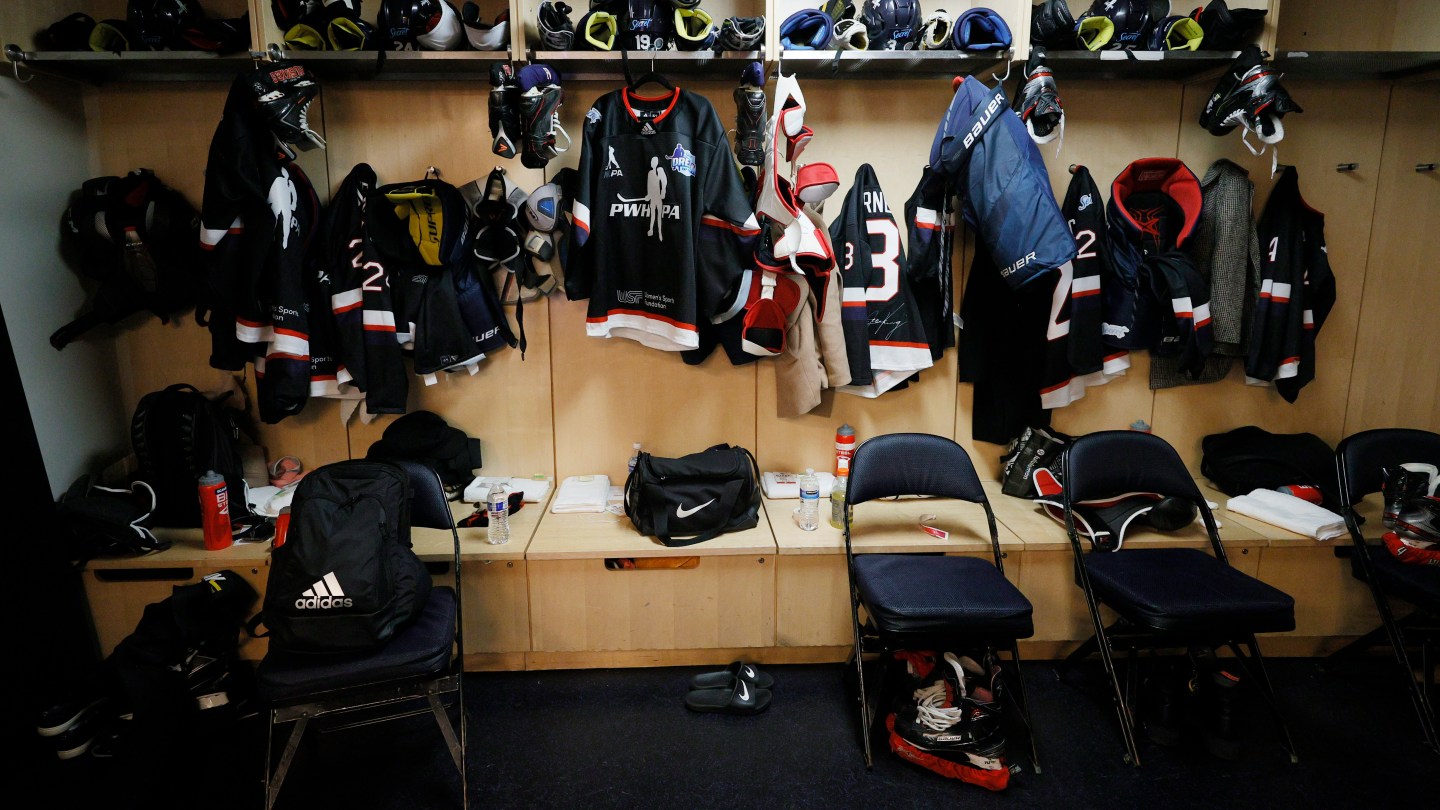
In the meantime, the NWHL added sixth and seventh teams in Toronto and Montreal, pivoted to a private ownership model, and rebranded as the Premier Hockey Federation (PHF). Rylan resigned as commissioner in October 2020 and left the league entirely the following spring. She would later say that new ownership had forced her out. The league’s new owners committed to dramatic salary cap increases, possibly as a gamble to lure back the sport’s biggest names. Before it ceased operations, the PHF planned to play the 2023-24 season with a $1.5 million per team cap, up from $150,000 in the 2020-21 season. The schism between the PWHPA and PHF lasted until this June, when Walter announced that he had purchased the PHF, clearing the way for “a new professional hockey league, featuring the world’s best women’s players.” PWHPA members said they had no advance knowledge of the acquisition.
In 2020, the women's hockey website The Victory Press published a long story on working conditions in the NWHL. Former players shared grim accounts of their time in the league: One recalled having to pee in trash cans because she didn't have access to bathrooms at the team's practice rink. Another said she'd only received her promised bonus for participating in the All-Star Game when she threatened to go public about the league's payment issues. Many of those problems had since been resolved, the story said. But the anonymous players interviewed didn't believe the league could provide them with the infrastructure they felt professional hockey demanded, they told The Victory Press:
"It wasn't really changing, it wasn't getting better, and we were expected to, in a sense, just be quiet and play and just be thankful for everything we had," one player said. "And I mean, we are thankful for the opportunity to play professionally in whatever way it is. But I think that the name professional should come with some, some standards, and I just don't feel like that league was able to meet those standards with some of the things that we did. I think going forward, we need to set our sights so much higher than that, and I think we definitely can."
Even as conditions improved, business in the league could sometimes be conducted “by shoestring,” as one agent put it. To the consternation of agents, the PHF's standard player agreements were at-will contracts. Players remained without any formal means of input or enforcement; its players association was not a recognized union. When the league’s longtime players association executive director Anya Packer left the role to be general manager of the PHF’s Metropolitan Riveters, she told Forbes in April 2021 that she hoped someone with a legal background could take over to guide players through a real unionization process. But the players remained without a union or negotiated CBA at the time of the sale. All PHF contracts—many of them signed while PHF ownership negotiated the sale—were terminated upon the Walter Group’s acquisition. PHF players received a month’s severance.
The new PWHL is the rare league to begin play with a CBA, which was negotiated over the course of more than two dozen meetings and ratified unanimously by 97 PWHPA members in July, days after the Walter Group acquired the PHF.
The labor lawyer Susan Davis, who led negotiations on behalf of the players, said a CBA gives athletes “a picture of what their lives are going to be.” Without one, they could wake up in six months and find that everything promised to them is gone. Davis is partner at a union-side firm in New York, and counsel to SAG-AFTRA and Actors’ Equity, among other entertainment industry unions.
She told me she has long known Howard Robbins, the attorney who represented the Walter Group. Asked to describe him, she laughed. “Howard … is a very high-level professional.” The relationship made negotiations easier, especially given the tight timeline. Knox noticed that each attorney had a good sense for when to push the other’s buttons. “It was an interesting thing to see for somebody like me, who’d never been in a negotiation at all,” she said. (Welcome to bizarro world, Defector reader: hockey players analyzing lawyers.)
CBAs come together in pieces. Davis and Robbins drafted proposals on each issue. In one meeting, the sides might reach a “tentative agreement” on, say, travel. The final document effectively patched those smaller agreements together. But the theme of professionalism, the idea that each aspect of this league should befit the best women's hockey players in the world, “permeated every issue,” Davis said.
The deal sets an average base salary of $55,000 USD and a $35,000 minimum, along with a $1,500 monthly housing stipend in the 2023-24 season. Each team is required to sign at least six players to three-year contracts of $80,000 or more per year, and no more than nine players per team can be signed to the minimum. Walter and the players had decided to use a compensation model laid out in the Deloitte plan, so an agreed-upon total spend for wages existed before collective bargaining began. But the number grew. “We pushed the envelope on some of those things,” Davis said—for example, the housing allowance, which the model hadn't included at all. Under the agreement, players receive eight weeks of paid parental leave and year-round health insurance. Just as importantly, to many players, the CBA guards against the indignities of old leagues by setting standards for travel, lodging, and the day-to-day aspects of the job sometimes grouped in the category of “player experience.”
The agreement lasts eight years, through 2031. Those briefed on the negotiations but not involved in them recalled players wanting a five-year deal, while the Walter Group asked for 10. “The pace of change in women’s sports is rapid right now,” said Meghann Burke, executive director of the National Women's Soccer League (NWSL) Players Association, which agreed to its first-ever CBA, a five-year deal, ahead of the NWSL’s 10th season in 2022. “So the risk of a long-term contract is that the growth outpaces the expectations or assumptions you made at the time you negotiate. But that’s always a risk for athletes in the long term.”
Brant Feldman, a longtime women’s hockey agent who represents PWHL players on a range of contracts, said he was pleased with the CBA, especially considering the players’ bargaining position and the dismal labor history of women’s hockey. “Certainly the CBA has some challenging parts to it. But at the same time, I think that the women did as well as they could in a situation where nothing has ever worked before,” he said. As for the “challenging parts,” Feldman offered one example: The league’s reserves—players allowed to train with their teams on weekends and sign 10-day contracts in case of injury—don’t receive any housing stipend. He acknowledged that this might reflect blind spots of the bargaining committee, which comprised the retired Knox and four national team members: Team USA’s Knight and Coyne Schofield, and Team Canada’s Brianne Jenner and Sarah Nurse. Players on the U.S. and Canadian national teams are also paid by their federations.
A veteran of the U.S. national team’s holdout before the 2017 World Championships, Knight was uncommonly fluent in legal and contractual language. Jenner spoke infrequently, but always commanded the room’s attention when she did. Nurse testified to the potential reach of her sport: She had relationships in the fashion and business worlds and starred on the covers of ELLE Canada and NHL 23. Most vocal at the bargaining table was Coyne Schofield, who minded the little things like punctuation and semantics, all while pregnant with her first child. When the committee members noticed Coyne Schofield hadn’t been active in the group chat the day after signing the CBA, they checked to see if she was OK. She responded with a photo of her newborn son.
It mattered to Davis that the athletes have a voice in negotiations. She built in opportunities for them to speak about their own experiences playing hockey—a number of planned but informal mini-presentations—especially on lifestyle issues where they could weigh in firsthand. “A lawyer speaking about those things is not going to get through to Stan Kasten the way Kendall or Liz or Brianne could,” Davis explained. She told me that while there is “the big table” in negotiations, the breakthroughs often occur privately. It was the players who met separately with the management group to make their case when serious disagreements arose over promotional rights near the end of the bargaining process. “They’re really smart,” Davis said. “It was not just their tenacity or commitment—I was bowled over by how smart they were.”
How do you negotiate when you have, practically speaking, no leverage? When the standards in your sport are non-existent? At one meeting, the committee members were adamant that players be served nutritious pre- and postgame meals, plus options for those with dietary restrictions. “Stan literally laughed,” Knox remembered. At the time, she didn’t know if he was laughing because their expectations were too low or too high.
Kasten arrived at the Utica rink on the second evening of evaluation camp. He looked every bit the image of the harried executive as he paced around on his phone by the snack bar. The sports story of the day was his baseball franchise’s possibly too public courtship of Shohei Ohtani. I joked to a team staffer that the walking-and-talking Kasten must be hard at work on the megadeal. Lo and behold, Ohtani was a Dodger that weekend.
Kasten is intense, excitable, a bit exhausting to listen to. When he answered questions about the PWHL at a November press conference, he had a way of impressing upon everyone the enormity of his job. “If you had told me I had to stand up an expansion team in an existing league with an existing hierarchy in six months, I would have told you that’s nuts,” he said, his very animated head battling the green-screened Zoom background. He made building a league from scratch in six months sound exactly as crazy as it is. But Jayna Hefford, the league's top hockey executive, wore the stress lightly. She nodded along to questions, as if she’d received them in advance and was only waiting for her cue to begin. She answered in neat, complete sentences, never once departing from the scope of the inquiry. “She’s very matter-of-fact,” Knox said. “She’s very focused on the plan. She’s very focused on immediate steps.” A Hockey Hall of Famer and four-time Olympic gold medalist, Hefford served as commissioner of the CWHL in its last year of existence before running the PWHPA’s operations. When the CWHL folded, the Jayna Hefford Trophy for CWHL MVP was one of several items put up for auction to help the league pay its debts.
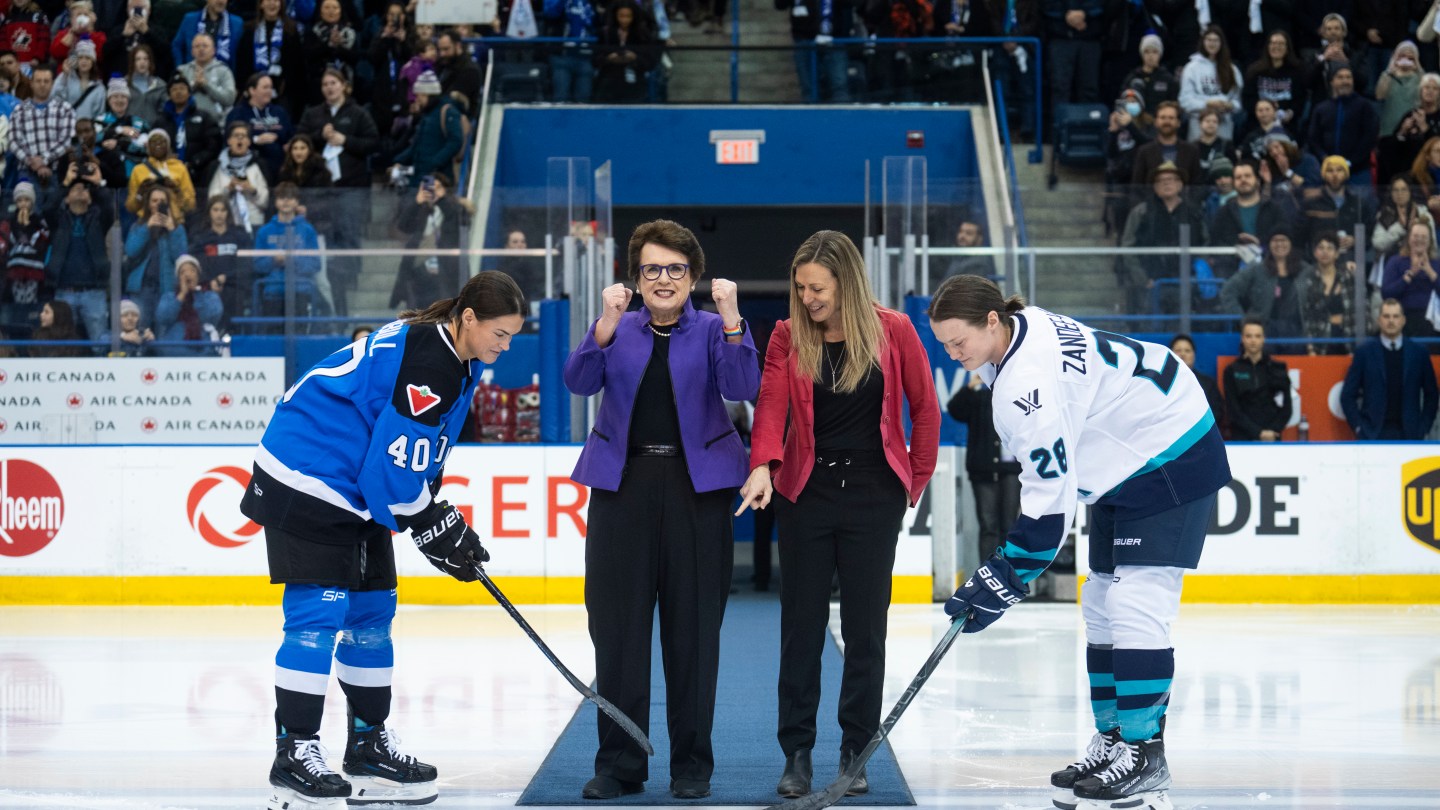
At that November press conference, Kasten and Hefford fielded questions about the league’s operations, most of them having to do with team names and logos, which the league will play its first season without. Kasten said his priority was to get the PWHL up and running quickly, even if it meant putting off those pieces until later. But they had, perhaps, underestimated how attached people are to a definition of professionalism that means slick branding. Only in the last five minutes of an hourlong press conference did anyone ask what rules this new league would use and who the referees would be.
A couple of scrimmage games at evaluation camp had the feel of a crossover episode, or a work of fan fiction. Blayre Turnbull, a forward I’d grown accustomed to seeing in a third-line checking role for Team Canada, scored a hat trick in the first game. Jamie Lee Rattray, a native of Kanata, Ottawa, said she was excited for the chance to finally play with the American Knight, her new Boston teammate.
After a scrimmage loss to Toronto, Rattray beamed while talking about how real the league was beginning to feel. She remembered her profession mid-sentence, and stopped to say that, of course, she would have liked to get the win. She had long craved the freedom to be single-minded. When she was a senior at Clarkson University, Rattray won the Patty Kazmaier Award for the best player in NCAA women’s hockey. But she missed the Canadian national team’s next Olympic cut, and spent her last few years in the CWHL balancing her training with an administrative job and coaching minor hockey before she debuted at the Olympics at the age of 29. “Being out of college this long and finally getting to a point where you don’t have to think about anything is really special,” she said. Other players mentioned the scrimmages feeling like “the first day of school.”
I met a triumphant and sweaty Abbey Murphy in the halls of Ridder Arena, where the seven-time national champion University of Minnesota Golden Gophers play. When the arena opened in 2002, it became the first purpose-built women’s hockey venue in the country. (The Gopher men play on the Olympic-size ice at Mariucci, down the street.) Ten years later, the University of Wisconsin built its own women’s hockey arena, LaBahn. I had come to see these two powerhouses compete in their “Border Battle,” a classic rivalry series. On this night in December, it boasted the country’s No. 2 and No. 3 teams.
Murphy is 21, a redshirt junior, and a strong candidate for the Patty Kaz this season. She takes powerful, skip-like strides, first wide of her defender, and then back in to the net. She's also kind of a pest. No player in NCAA women's hockey has spent more time in the penalty box this season. The first period alone featured an “Abbey Murphy hat trick”: an even-strength goal, a power-play goal, and a five-minute major for slashing.
To understand the baggage the world’s best players brought to the bargaining table, it helps to go back to school. Women’s hockey’s highest standards are set here, in barns like Ridder and LaBahn. The advent of NIL rights has exposed a longstanding irony of women’s sports: Many players feel their last brush with “professionalism” as amateurs. Behind a row of sousaphonists twisting to the student band's rendition of "Butter," a dozen large bright panels honored the program's Olympians. Murphy's action shot hung at the end of the row. She made her debut in Beijing at 19, and though she was mostly stapled to the bench in big games, it was clear from even limited ice time that a full schedule and proper training facilities gave the college players a little extra oomph.
Murphy knew about the new league from the bargaining committee members on her national team, Knight and Coyne Schofield, a local hero Murphy had admired for a long time growing up in the Chicago suburbs. But it wasn't an option she had expected to exist when she started college. “I honestly had no idea. I didn’t think so,” she told me. COVID had also hit during her freshman season, "so I didn’t even know what to believe in at that point.” (She illustrated this confusion with jazz hands.)
Nor did she conceive of the PWHL as her future workplace just yet. In Murphy's mind, it was an accomplishment for her friends. “They built this league. It's been a dream for them,” she said. “I still have two more years of college though, so it's just kind of cool seeing it build.” A number of older players remembered being blind to the landscape of professional women's hockey when they were in college, probably because being a college student is all-consuming and fun.
I asked Murphy if she liked school. “No. Not at all,” she said. “I don’t, but I love it here. I love the hockey aspect. The people, the coaches. I couldn’t ask for anything else. I’m not ready to leave yet, I’ll tell you that. I’ll take as many college years as I can. I’m in no rush.”
That night, I pondered this at a Stadium Village bar called Stub and Herbs, where I was carded twice, housed a plate of nachos, and listened to some undergrads debate whether Anthony Edwards or Rudy Gobert is the best player on the Minnesota Timberwolves. (Dudes rock.) On the way from Ridder, I had passed Wisconsin’s team bus, parked outside the arena's front entrance. A few players had already hopped aboard. The driver stood guard, waiting to offer a hand with bags. Through the window, I could make out plush seats and carpet-paneled overhead bins. Murphy described the typical team road trip to me with nonchalance: Most of the work fell to her team’s equipment manager, who was “the best guy out there.” Their bus driver Steve, also “the best man out there,” would get all the gear packed in the storage compartment underneath. She shrugged. “It’s actually pretty easy.”
I remembered an interview I’d read with Knight, a former Badger, in which she described traveling from Boston to Buffalo for an NWHL game in a bus with no bathroom, all her bags and gear crammed next to her. There was now an epilogue to her story in Section 8.7 of the CBA, on Travel and Parking: “For Team bus travel, Players will not be required to have their equipment in their laps or seats.”
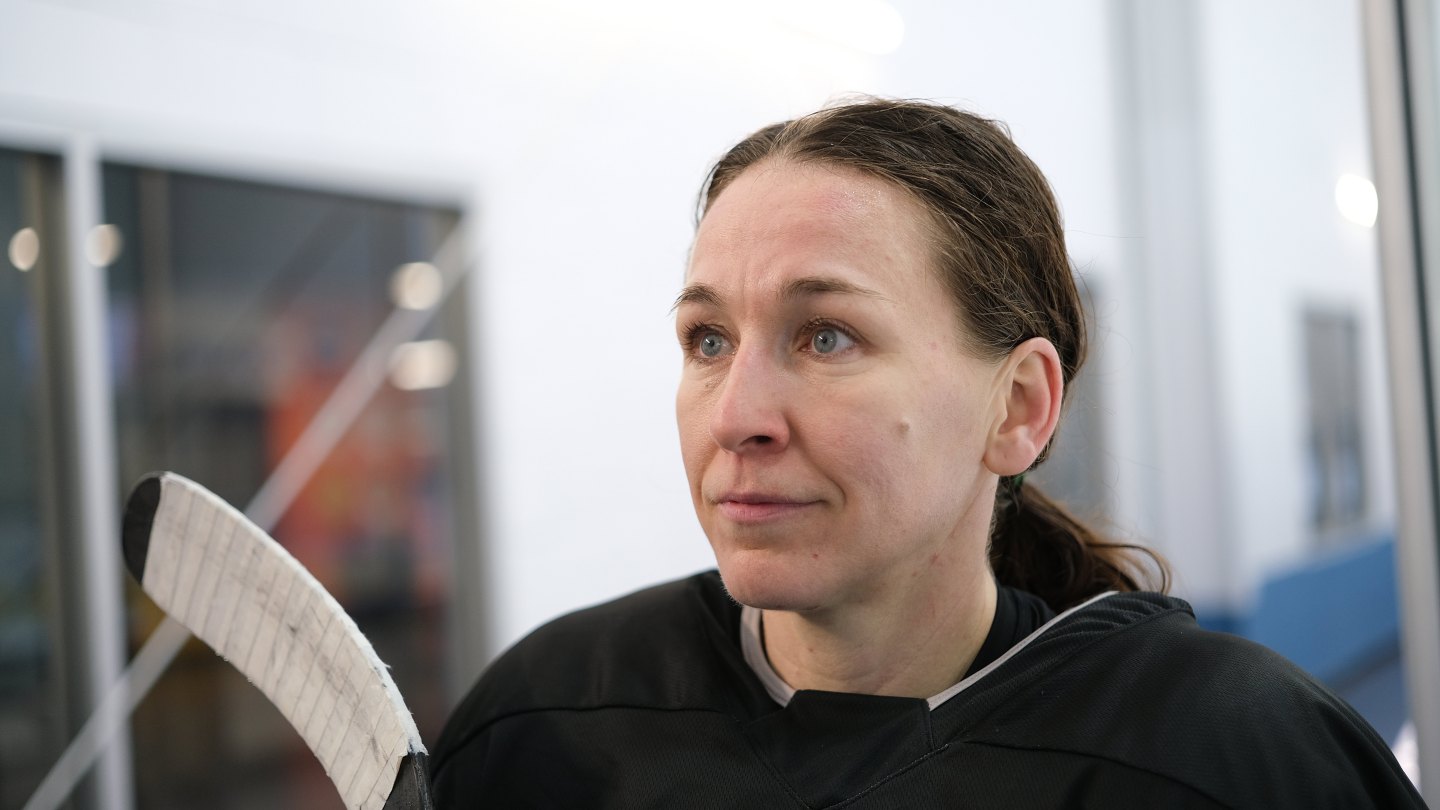
In hockey, heaven is other people. The sport runs on sharpened skates, stitches, goalie coaches, video sessions. In the past, Toronto’s Nurse said, volunteers had done much of that work. Even as the PHF raised salaries and expanded, it hadn’t made corresponding investments in building out the league’s skeleton staff. Each PWHL team has a doctor, two athletic therapists, and a massage therapist. “We have all the resources at the tips of our fingers,” Boston’s Megan Keller told me. “We have a full equipment staff, medical staff, ATs, PTs, massage therapists, strength and conditioning.” She described what was long an informal network of players finding and sharing those resources themselves after graduation. Now, Keller said, “it’s here all the time.”
At the PWHL's inaugural draft in September, the second player off the board was the 35-year-old defender Jocelyne Larocque, to Toronto. Larocque cuts a quieter figure in street clothes than she does on the ice, where she eats minutes and muscles forwards off pucks without much sweat. “Joce, for so long, has been the best stay-at-home D in the world,” Turnbull, her Toronto teammate, said. The team-building strategy raised some eyebrows; it allowed Boston to nab the 25-year-old star Swiss forward Alina Müller with the third pick. But it was the kind of story I’d always been drawn to when reading about new women’s leagues: They made rookies of everyone.
“This is something that I guess I wasn’t sure was going to happen in my time of playing,” Larocque said. “I feel so honored and blessed and grateful that I can be a part of the first real pro league for women.” How often do life’s possibilities expand as you get older?
In the summer, Brian Burke received a call from his son Patrick, who works in player safety for the NHL. Patrick has also been responsible for inviting top women's players to NHL All-Star events; he arranged Coyne Schofield's appearance in the Fastest Skater contest in 2019. His call was to pass along a message from Coyne Schofield: She wondered whether Burke, notorious NHL management lifer, would be interested in leading her new union.
Brian Burke interviewed for the job over Zoom. When the players extended him an offer, he cried. In some ways, he makes an odd women's hockey union boss. A certain tough-guy orthodoxy defined his front office tenures. But he traced his love for the women's game back to its Olympic debut in Nagano, where the Americans won gold. “Julie Chu was my favorite, because she worked so hard,” he told me. “I thought watching Julie Chu play that if everyone worked that hard, no one would ever lose a game.” Later, as a CWHL season ticket holder in Calgary and Toronto, he was struck by how much is taken for granted in men's hockey. On two or three occasions, he watched a group of players share a single roll of tape for their shin pads. “I remember thinking, ‘For God's sake. Are we that cheap with the women?’”
A graduate of Harvard Law and a player agent early in his career, Burke said his first days as PWHLPA executive director involved multiple reads of the CBA. He's in the unusual position of enforcing a CBA he had nothing to do with, since he was hired after players ratified the agreement. He works from a small office at Maple Leaf Gardens and plans to hire a deputy executive director within the year, ideally a woman who can succeed him when his two-year term expires. In his memoir, Burke wrote that he once turned down an offer to lead the NHLPA—“I’ve never been in a union in my life and had no interest in being a union leader”—and he told me he would turn it down again today. “The appeal to this was working on the women's game.” If Stan Kasten had offered him a job as Hefford's deputy, he said, he would have been just as interested.
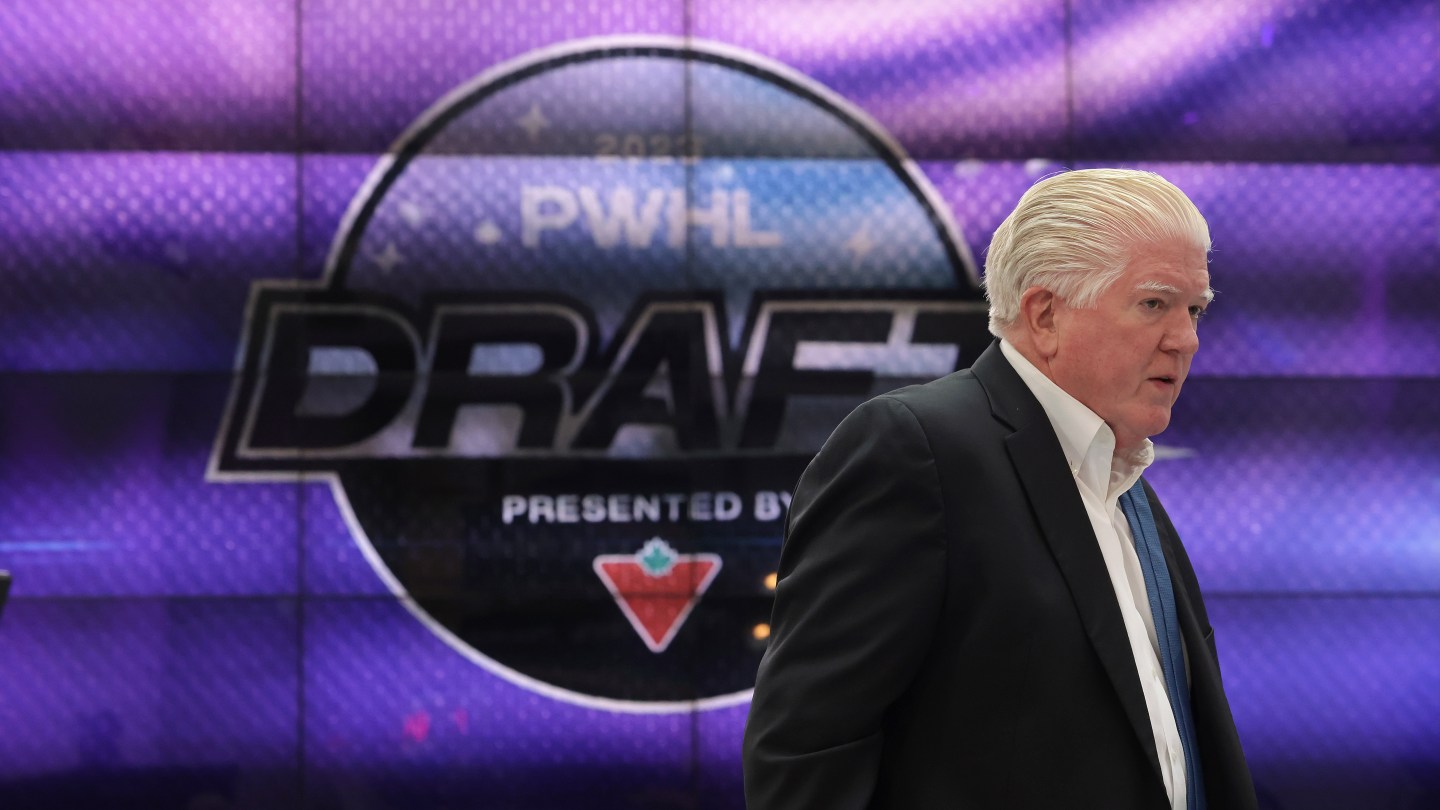
That was the next question: Women's leagues project benevolence, but they are also companies. Were the lines between players and management obscured here? Did the rah-rah of it all crowd out opportunities for truculence? Could the union bare its teeth? He considered this. “I like to fight. I’m good at it,” Burke said. He found fighting therapeutic. But he offered that fighting is a game of timing, and that there were times not to fight—when you're up 4-0, when you might give the other team a spark. “Right now, we need to get along. But that's not always going to be the case. And I think the women know I'm perfectly prepared to fight when it's appropriate, and fight hard when it's appropriate.”
It's peculiar, if not surprising, that women athletes so often must defend their employers. In women's sports, the best players in the world are conscripted as ambassadors. They work this second job for no pay. Their task is to plead two related but meaningfully different cases: that what they love to do can be a viable business, and that what they love to do must be done in a stable working environment. In the interest of the first fight, it might seem reasonable to downplay the second. There's no easy way to say that what you do matters while simultaneously pointing out everything that suggests the opposite. This tension spans generations. When Jayna Hefford returned home from victories in Salt Lake City or Turin, no one wanted to hear about funding and infrastructure. They wanted a good Canadian girl to say the women's game was growing, that its future was bright, that it was charging forward. They loved a simple story of progress, no matter how true.
Hilary Knight learned this lesson early. In her third CWHL season, she once tweeted a corny comic strip about having to sell tickets to her own games, which was a regular practice; at the time, she owed the team $350. Her team's general manager, Aronda Kirby, called the comic “unprofessional and immature to say the least” in an email to the entire team. That was the unprofessional part—not asking players to raise money, but pointing this system out. Kirby understood where Knight was coming from, but she urged the players to think about the bigger picture: “We have to demonstrate to sponsors that we can sell the product, that we can put people in seats. And when someone like Hilary Knight makes a statement, it makes a huge impact.” Years later, Knight would call the CWHL and NWHL each “a glorified beer league.” She'd decided she could no longer tell the story.
For a long time, she had. “We sort of had the cloak and mirrors for so long to make sure that we were pushing the CWHL and we were pushing the NWHL,” Knight said on a panel in January 2020. “But the harsh reality is we were so far from where we need to be.” She repeated that idea to me when we spoke. “I think we’ve all pretended like we were pro,” she said. But to her, “pro” meant proper healthcare and benefits and a premium player experience. “And we’ve never had either.”
Knight's “beer league” comments, and the angry response to them, were parsed in a paper co-authored by a small group of non-national team PWHPA members (Knox among them) and Courtney Szto, a Queen’s University professor who researches hockey culture. The authors cited the theorist Sara Ahmed and her concept of the “feminist killjoy,” who ruins others’ fun, but righteously. “We become a problem when we describe a problem,” Ahmed wrote in her 2017 book.
Szto acted as a mentor to some PWHPA players. She advised them, Knox remembers, to consider how much they wanted to stand out and how much they wanted to fit in. “We’ve only known success in the hockey environment as very rigid, very linear, keep your opinions to yourself, just show up and play,” said Knox. Could there be another way? A time-honored National Hockey League tradition is the post-playoff debrief, when it comes to light that half the players were toughing it through extreme pain. The sport has never heaped much glory on people who say exactly how they feel.
When women are asked to put the first fight above the second, when they are made to see these ideas in conflict, they're even less inclined to say how they feel. These pressures can be devastating at their worst. Their effect haunts the pages of the Yates Report, the 2022 independent investigation into misconduct and abuse across the NWSL (emphasis mine):
Players were also repeatedly enlisted in the effort to keep the League afloat by protecting it from scandal and were told to be grateful that they had an opportunity to play professional soccer at all.
Multiple players reported that they were discouraged from raising concerns and repeatedly told to be ‘grateful’ that they had an opportunity to play professional soccer. Team and Federation leadership explicitly encouraged players to protect the League from failing as its predecessor leagues had.
The NWSL was the third attempt to field a women’s professional league and was established with low capital requirements to ensure the league had eight teams. Many teams seemed to be one bad season away from shuttering. Players reported being told by Federation leadership and certain team owners that the League was not commercially successful enough to warrant further financial investment, and that the only way to ensure the League’s survival was for players to support the League.
The problem with this—with the idea that everything can be solved by players sucking it up to “grow the game”—is it’s not true. No sport is better off for its best players feeling unhappy or uncertain. Meghann Burke, the NWSLPA head, described soccer players’ “very real” fears of the league folding or losing investors when they spoke publicly about institutional failures. But she pointed to a league that plans to expand in coming years and recently announced a landmark $240 million broadcast deal. “When you look at broadcast ratings, attendance, sponsorship dollars, just general expansion, investment in NWSL, it took off after players spoke truth to power and were willing to build a league where players wanted to play.”
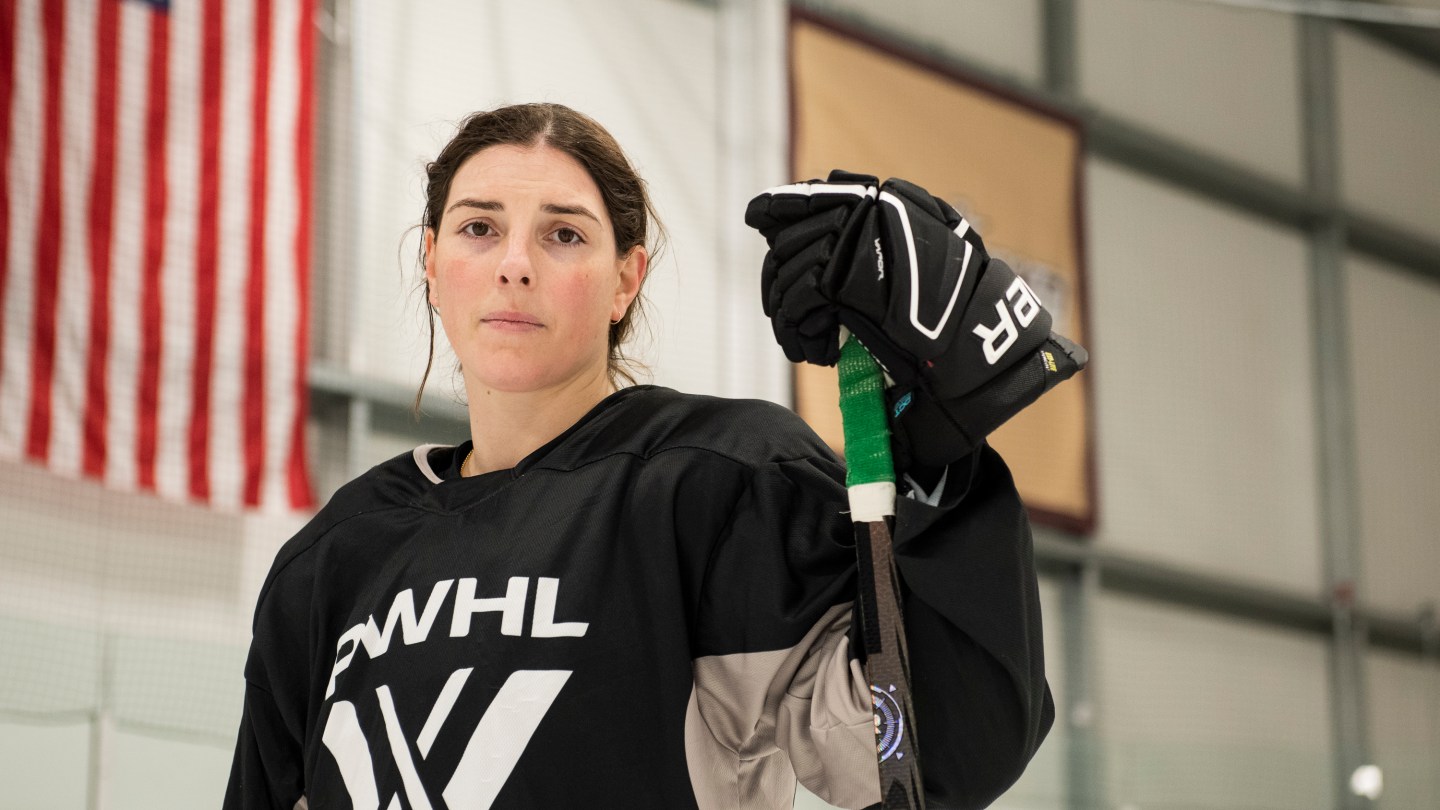
In the first game Knight played at the Utica evaluation camp, there was a moment when she got stuck on a long shift. That’s what it looked like, anyway. The effects of her age—she turned 34 this past summer—sometimes seemed obvious and then other times would vanish. When she had a chance to dump the puck and go for a change, she instead caught her defender flat-footed and bolted up the ice for a scoring chance. The scrimmage schedule called for a shootout after every game, and Knight eschewed the fuss of the other attempts. There was no dekeing, no dangling, no shimmying. “Straight business,” Murphy described Knight. “On and off the ice.” The puck pinged off the crossbar and into the net. A Quebecois television reporter who had not said a single word to me in two days swiveled around to face me and, after a moment, whispered, “Wow.”
At the 2022 Olympics, Knight represented a sluggish American team, outskated by the Canadians. But at the World Championships in Brampton the next spring, her first Worlds with the “C” on her jersey, she looked reborn. Knight scored a hat trick against Canada and led her team to a comeback victory for gold. She’d honed her power forward’s game—built on slipperiness and net-front finishing—so that now it felt age-proof, the recipe by which prodigies become lasting greats.
After the scrimmage, she dressed, and we chatted beside the rink. The PWHL had opened the next game to the public. Fans were gathering by the doors for the scheduled player meet-and-greet on the concourse level. Somewhere up there, they'd spend the evening posing with a cardboard version of Knight, tugging at her jersey with her left knee high in celebration. Downstairs, the real Knight leaned against the clammy cinder-block wall, her hands in her pockets and both feet on the ground. Earlier I had spoken to Keller, her Boston teammate, who acknowledged some nerves about playing her first full schedule in a while. The rust was the non-negligible cost of forgoing three seasons. But at the same time, Knight told me, “What’s the option? Do we keep doing this thing that does the next generation a disservice in many ways? Or do we stand up and be bold and try to accomplish something great?”
In three days, she would leave to play a pair of sold-out Canada-USA Rivalry Series games in southern Ontario. Several of the young stars from the Border Battle, including Murphy, would join her on the Team USA roster, which is suddenly trending young and interesting between Olympic cycles. Knight’s eyes widened when she talked about “the Abbey Murphys of the world,” and how excited she was to build something for them: a place where all they’ll have to do is show up. She launched into a scouting report. Murphy made plays with her speed, and she was hard as nails. But she was also a player willing to learn from a humbling game. Hilary Knight looked into the future and, finally, the picture was clear. “She’s going to be lights-out when she gets here.”

